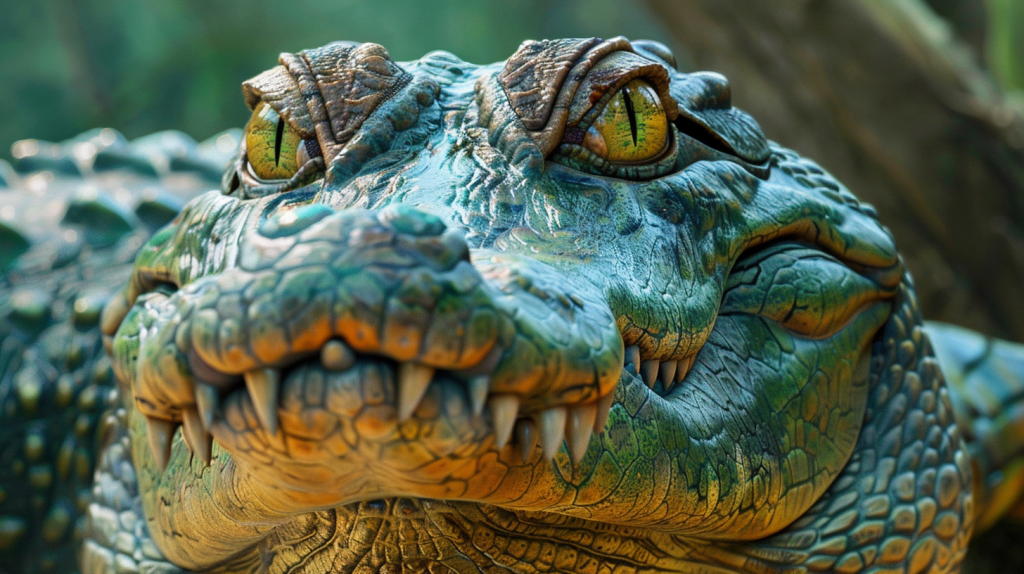Sarcosuchus, often referred to as the “super croc,” was one of the largest and most formidable reptiles to ever roam the Earth. With a length of up to 40 feet and a weight exceeding 8 tons, this colossal predator dwarfed modern crocodiles and lived during the early Cretaceous period, primarily in areas that are now Africa and South America.
This prehistoric giant was not just large in size; it played a significant role in the ecosystem, preying on dinosaurs and other sizable creatures of its time. The sheer magnitude and power of Sarcosuchus make it a fascinating subject for paleontologists and dinosaur enthusiasts alike, as it exemplifies the incredible diversity of life that existed millions of years ago.
1. Sarcosuchus imperator was nearly 40 feet long
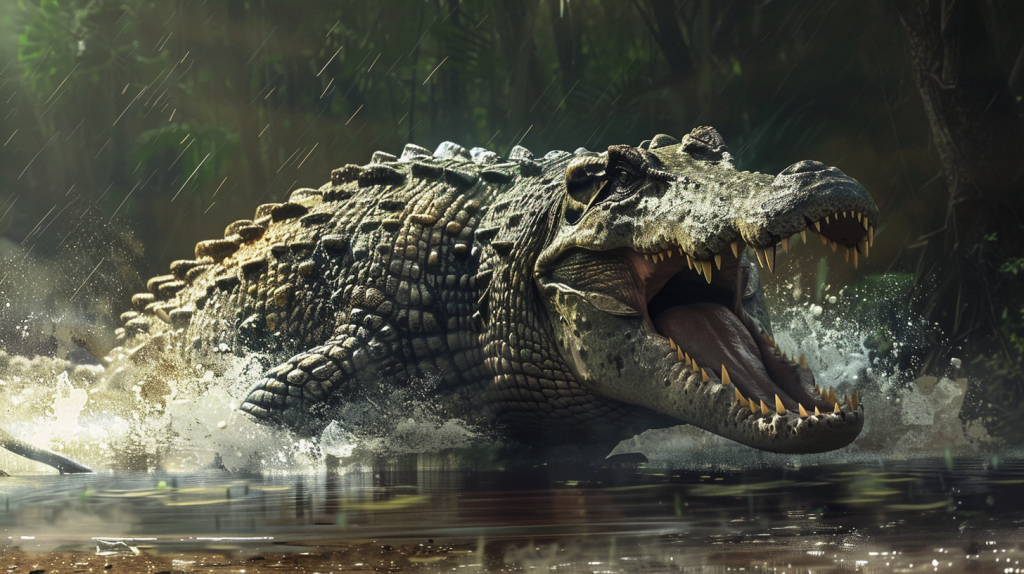
Sarcosuchus imperator, often referred to as the “super croc,” was an enormous prehistoric crocodile. This colossal reptile could grow up to nearly 40 feet in length. To give you a sense of its size, that’s longer than a school bus!
Its immense size made it one of the largest crocodile species ever to exist on Earth. Sarcosuchus dominated its habitat with its incredible length and power.
2. Weighed approximately 8 tons
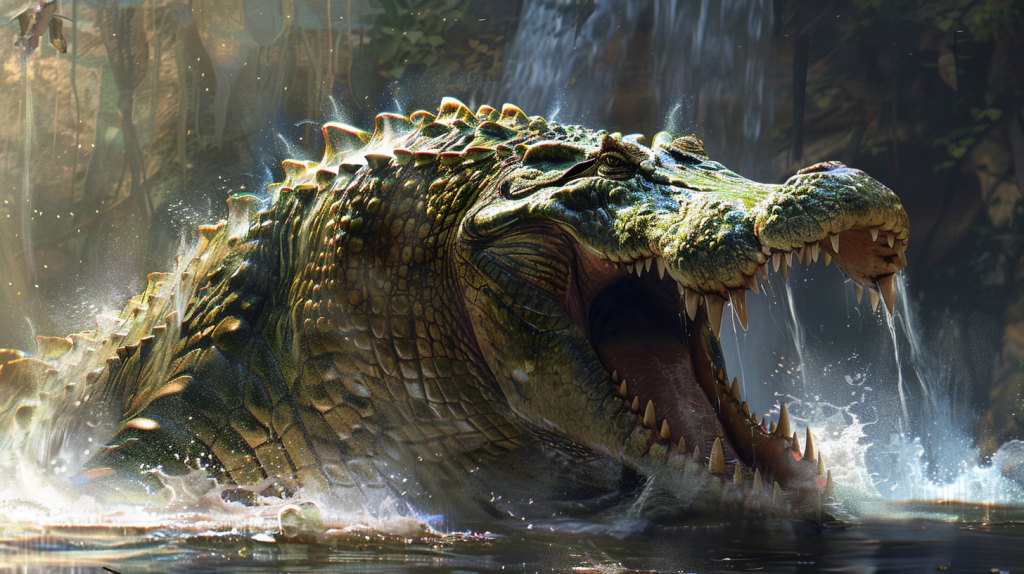
Sarcosuchus, also known as the “flesh crocodile,” was massive, reaching up to 8 tons in weight.
To give you a sense of scale, that’s almost twice the weight of today’s largest crocodile species.
This gigantic reptile had a tremendous presence, making it a formidable predator in the prehistoric world.
3. Lived around 110 million years ago
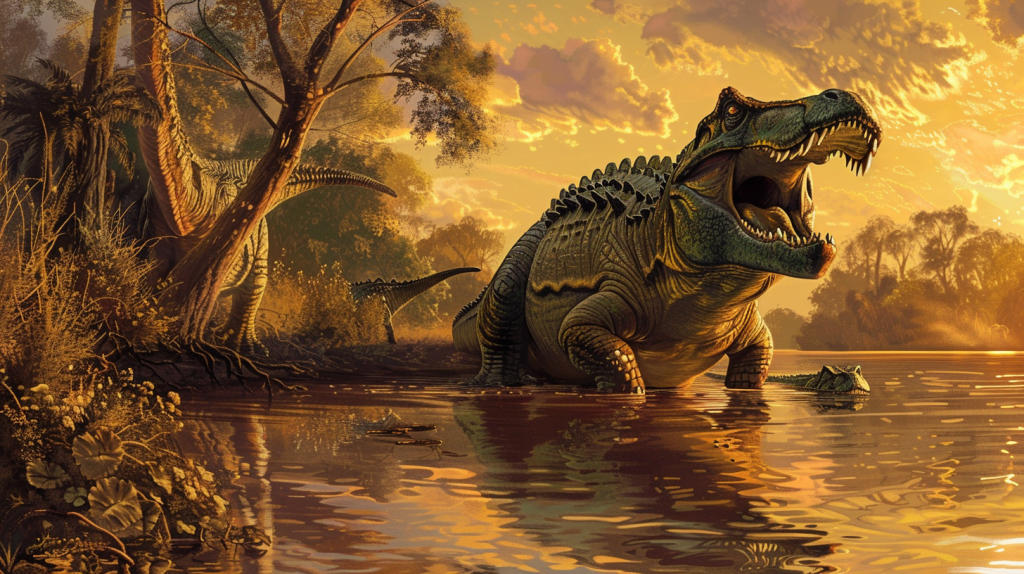
Sarcosuchus roamed the Earth approximately 110 million years ago during the early Cretaceous Period.
This colossal crocodile-like reptile lived in regions that are now part of Africa and South America.
You can imagine Sarcosuchus as the dominant predator of its time, thriving in river environments and hunting a variety of prey, including potentially large dinosaurs.
4. Inhabited ancient rivers in Africa
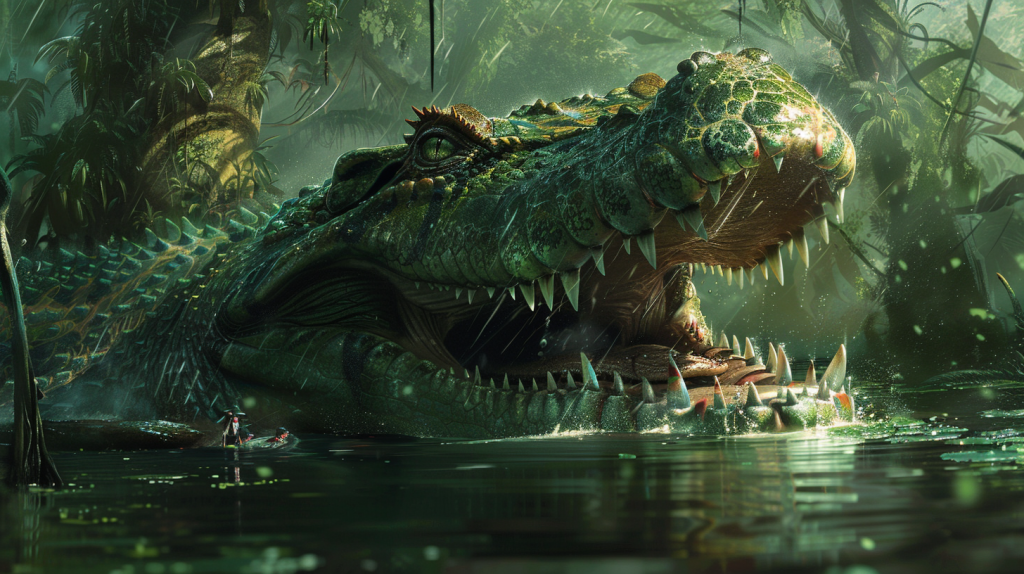
Sarcosuchus lived in ancient African rivers millions of years ago.
These prehistoric crocs roamed waterways that are now part of the Sahara Desert.
Ancient river systems, such as those where Sarcosuchus lived, helped shape the ecosystems of their time and created thriving habitats for numerous species.
5. Known as the ‘SuperCroc’
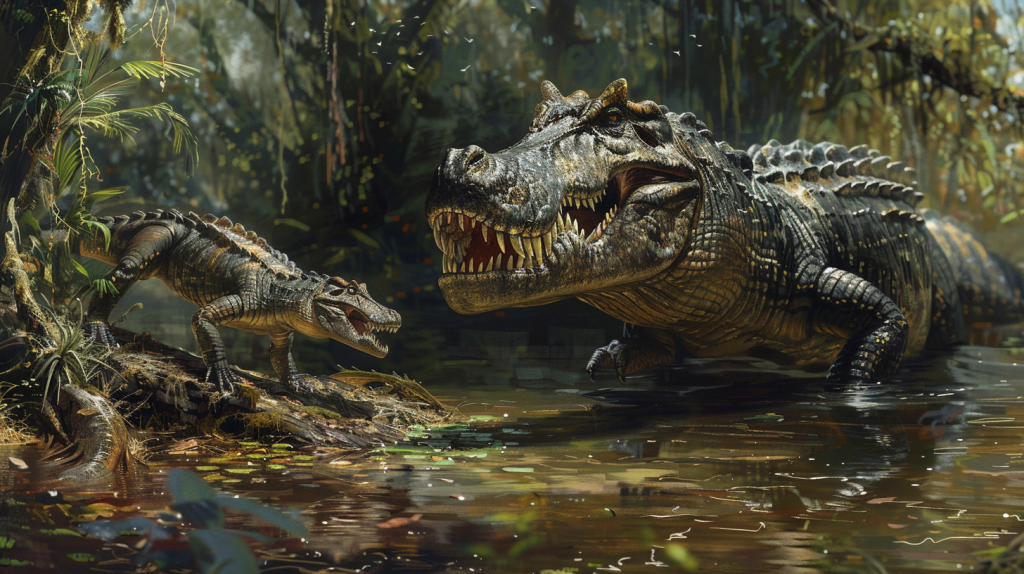
Sarcosuchus was a prehistoric giant. This name highlights its immense size, dwarfing modern crocodiles.
With a length of up to 40 feet, it was one of the largest crocodilians to ever live. The ‘SuperCroc’ nickname comes from its remarkable stature and predatory prowess.
Its elongated snout and sharp teeth made it a formidable hunter, capable of taking down large prey, including dinosaurs.
6. Could bite with a force of 18,000 pounds
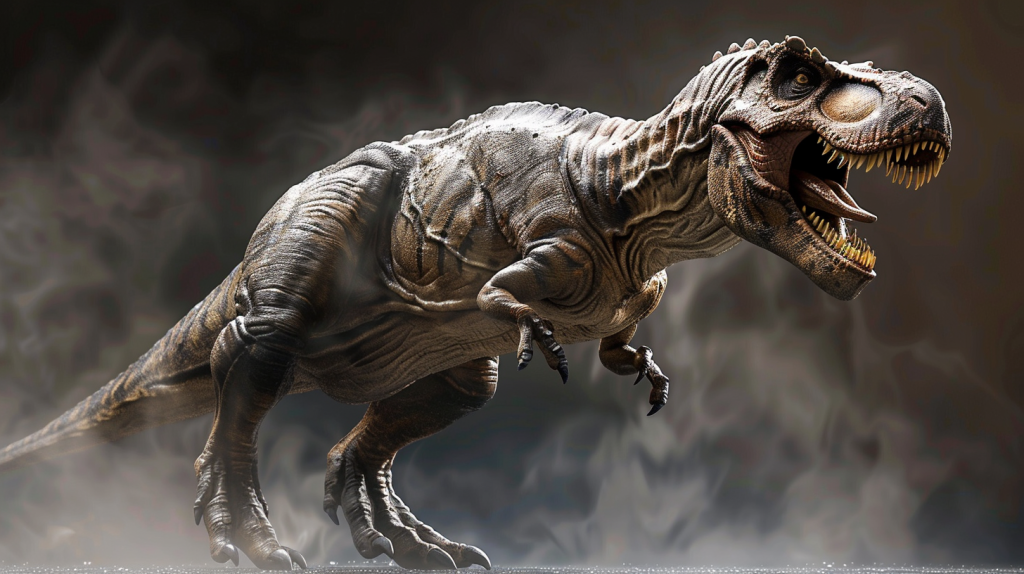
You won’t believe the sheer power of Sarcosuchus’s bite. This prehistoric crocodile could chomp down with a staggering 18,000 pounds of force.
To put it in perspective, that’s twice the bite force of the Tyrannosaurus rex. Imagine the strength needed to crush bones and capture prey in ancient times.
Sarcosuchus was a true monster of its era, showcasing nature’s incredible power and adaptability.
7. Preyed on large dinosaurs, including T-Rex
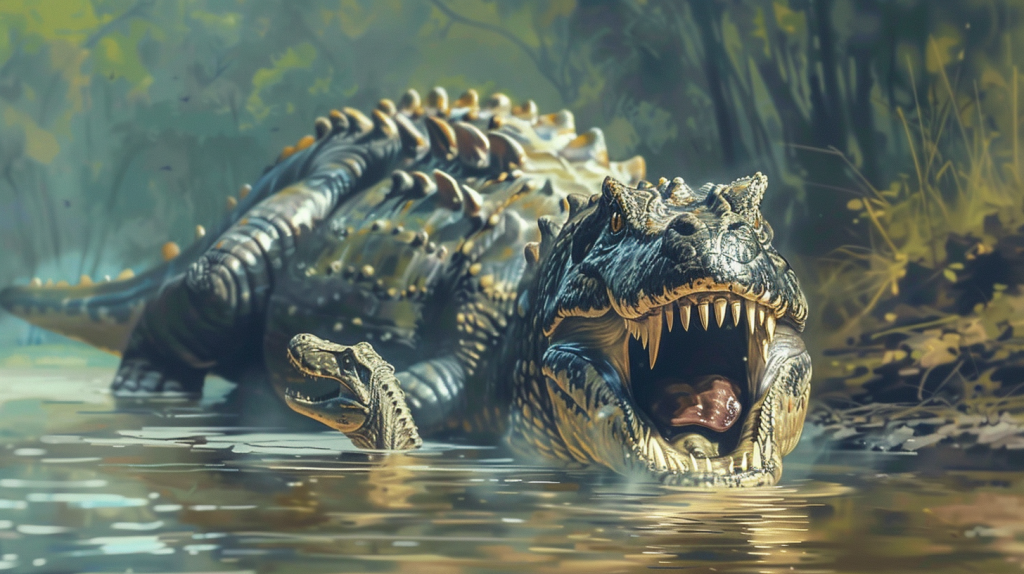
Sarcosuchus was one of the most formidable predators in its ecosystem.
This colossal crocodile had the power to take down some of the largest dinosaurs, including T-Rex.
With its massive jaws and sharp teeth, it could easily ambush dinosaurs that ventured too close to water.
Sarcosuchus likely used its size and strength to overpower these massive creatures, making it a true terror of prehistoric times.
8. Had a long, powerful snout
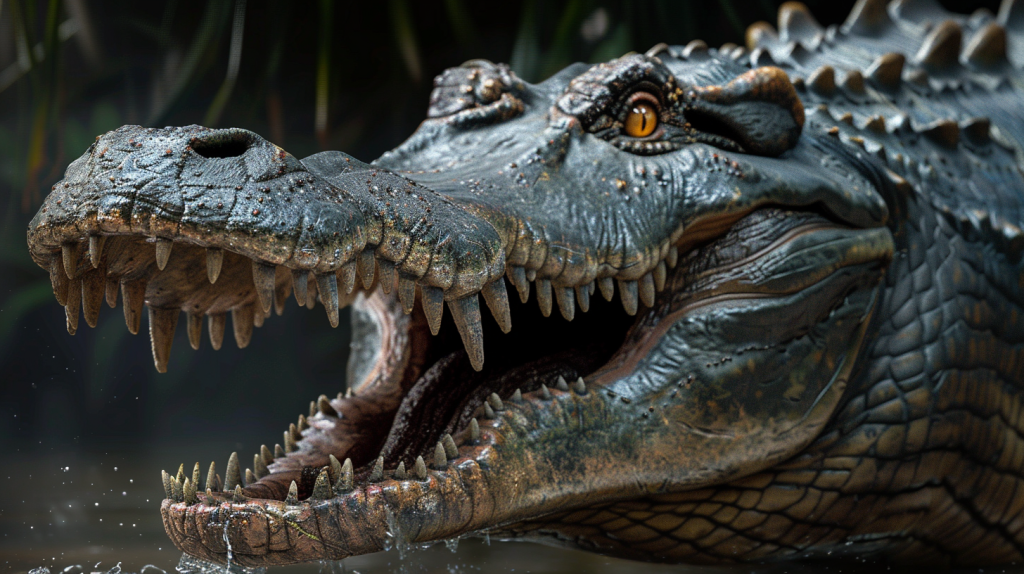
Sarcosuchus was known for its long, powerful snout, which made up about 75% of its skull length.
This enormous feature helped it catch and hold on to prey.
The snout’s design was perfect for gripping and tearing apart large animals, showcasing the predator’s incredible strength and adaptability.
9. Skull Measured Nearly 6 Feet
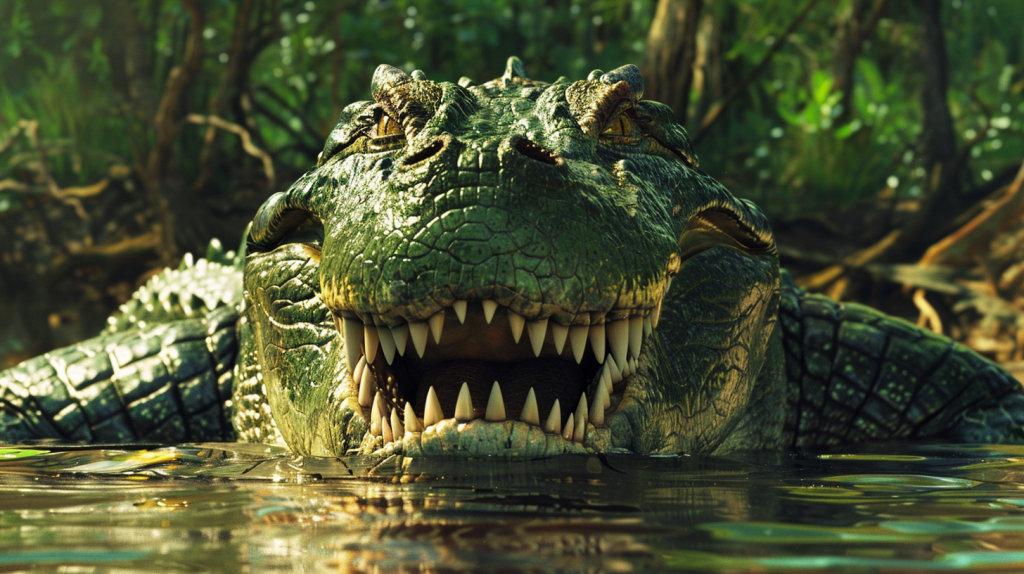
The skull of Sarcosuchus imperator could reach nearly 6 feet in length. This massive size helped it dominate the waterways of what is now Africa during the Cretaceous period.
Its elongated jaws were lined with numerous stout teeth, perfect for gripping and crushing prey. These features made its skull not only enormous but also uniquely adapted for hunting large animals.
10. Believed to have hunted like modern crocs
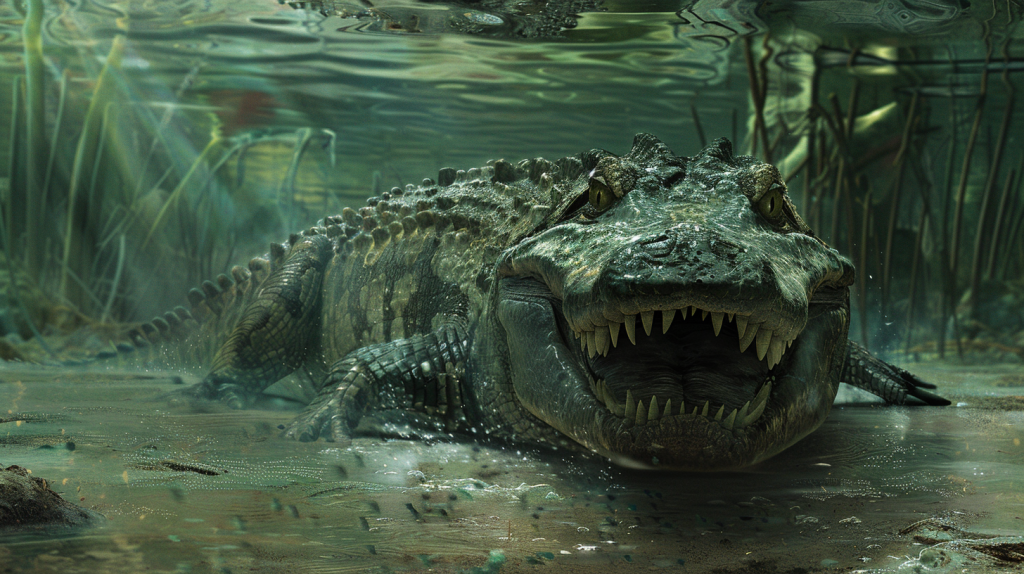
Sarcosuchus, the enormous prehistoric crocodile, likely hunted much like today’s crocodiles.
You’d see it lurking in rivers and swamps, silently waiting for prey.
It could launch itself out of the water with surprising speed, snatching unsuspecting dinosaurs.
Its ambush tactics and powerful grip made it a formidable predator. Like today’s crocs, it would drag its prey underwater to drown it.
11. Possessed Huge Conical Teeth for Gripping Prey
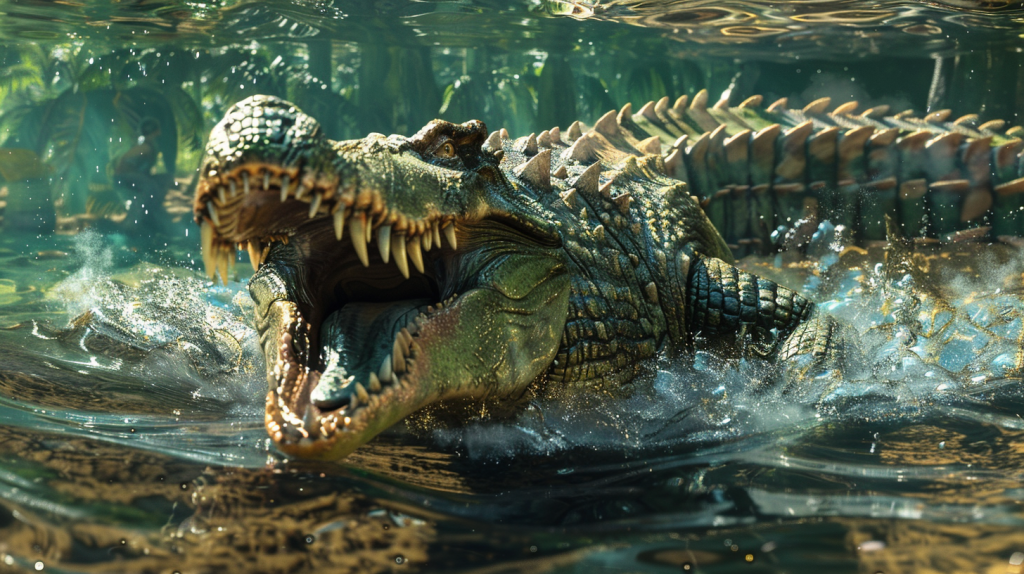
Sarcosuchus had an array of conical teeth, ideal for gripping its prey.
These teeth were specially adapted to snatch and hold onto fish or other animals.
The conical shape helped Sarcosuchus maintain a firm grip, preventing its prey from escaping. Its teeth were enormous – roughly the size of bananas.
12. Discovered in the Sahara Desert
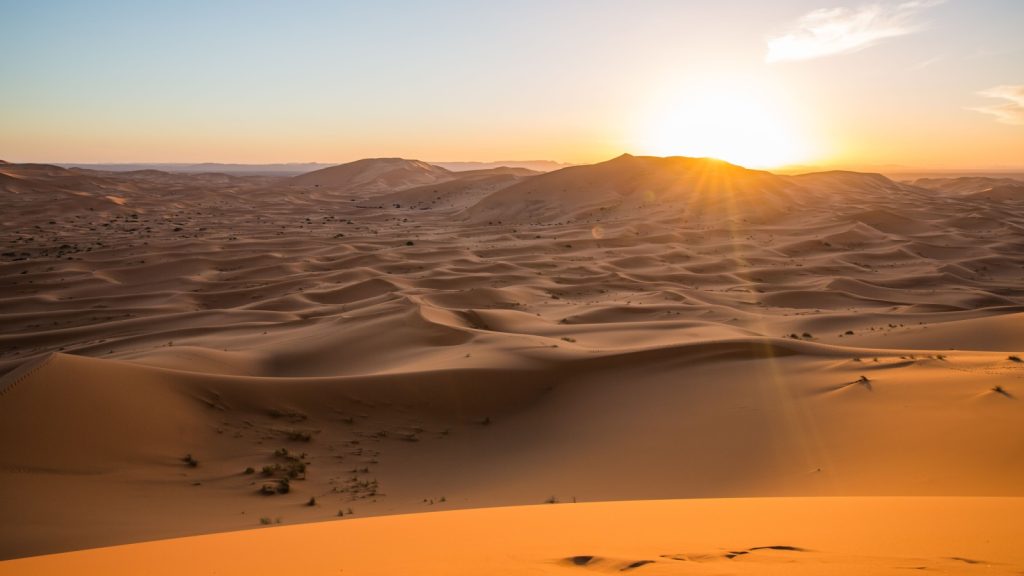
Paul Sereno, a renowned paleontologist, uncovered Sarcosuchus imperator’s remains in the African Sahara. This colossal crocodile is often dubbed “SuperCroc.”
The Sahara, once a lush region with abundant rivers and wildlife, was Sarcosuchus’s habitat. This fascinating discovery proves that what is now a vast, barren desert was once a thriving, lush ecosystem, teeming with plant and animal life.
You can imagine the excitement when these immense fossilized bones were found, changing our understanding of prehistoric life.
13. First fossils found in the 1960s
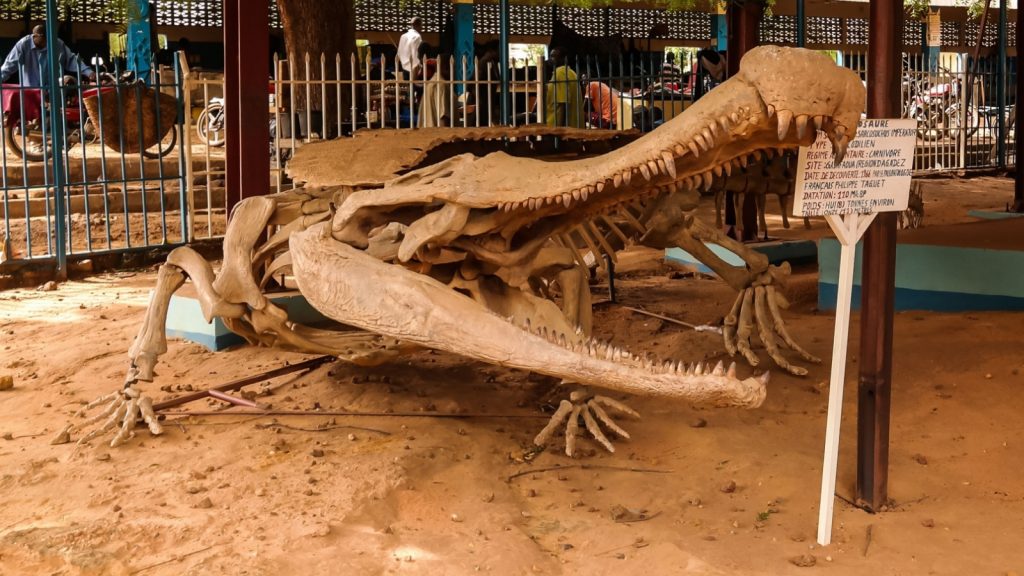
You can trace the first discovery of Sarcosuchus fossils back to the 1960s. In 1964, a fossilized skull was unearthed, identifying Sarcosuchus as its own distinct genus. This find opened the door to more discoveries, such as vertebrae and other skeletal parts, which came later.
14. Name Means ‘Flesh Crocodile Emperor’
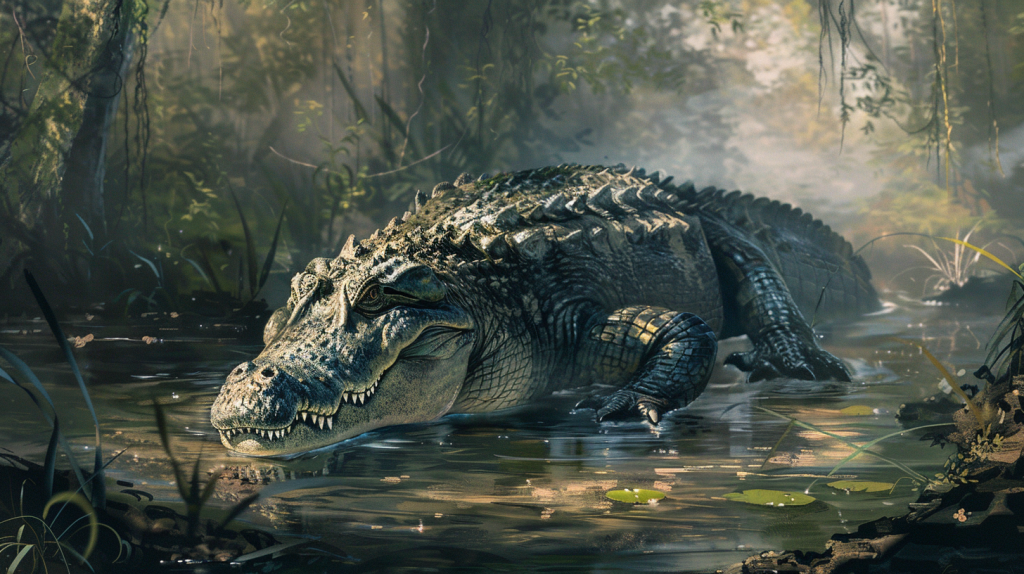
The name Sarcosuchus comes from the Greek words “sarx,” meaning flesh, and “souchos,” meaning crocodile. This gives the creature its name, “flesh crocodile.”
The full scientific name Sarcosuchus imperator translates to ‘flesh crocodile emperor.’ This title highlights its dominance and massive size, almost double that of modern crocodiles.
Sarcosuchus was a true apex predator of its time.
15. Had Scaly Armor Protecting Its Back
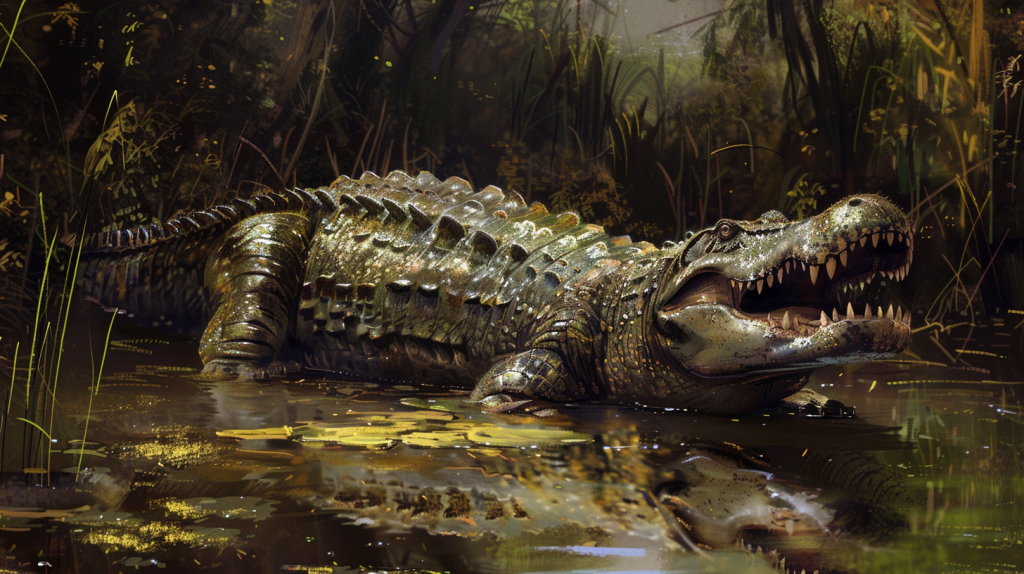
Sarcosuchus, the massive prehistoric croc, had impressive scaly armor on its back. This thick skin wasn’t just for show. It acted as a defense mechanism against predators and environmental threats.
The scales, or osteoderms, were bony deposits that added strength and durability. These armored plates provided the Sarcosuchus with an extra layer of protection, making it a formidable predator during its time.
16. Believed to be a semi-aquatic predator
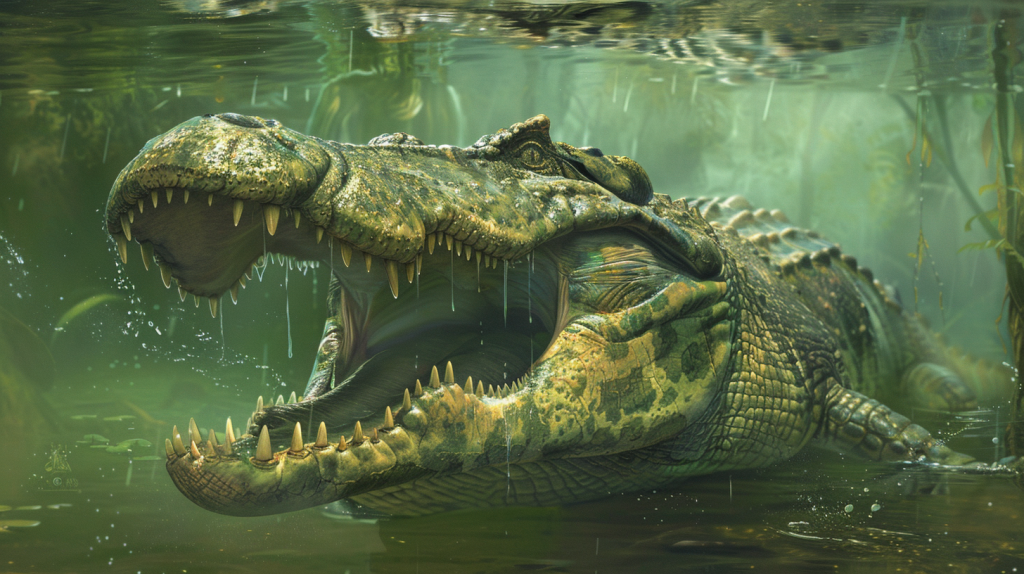
Sarcosuchus is thought to have lived in both water and on land. This huge crocodile-like reptile likely spent much of its time in rivers and lakes. Its powerful limbs and large tail were well-suited for swimming.
You can imagine it lurking in the shallows, waiting to ambush its prey. This semi-aquatic lifestyle allowed Sarcosuchus to hunt a wide range of creatures, including fish and dinosaurs.
17. Shared Habitat with Other Massive Reptiles
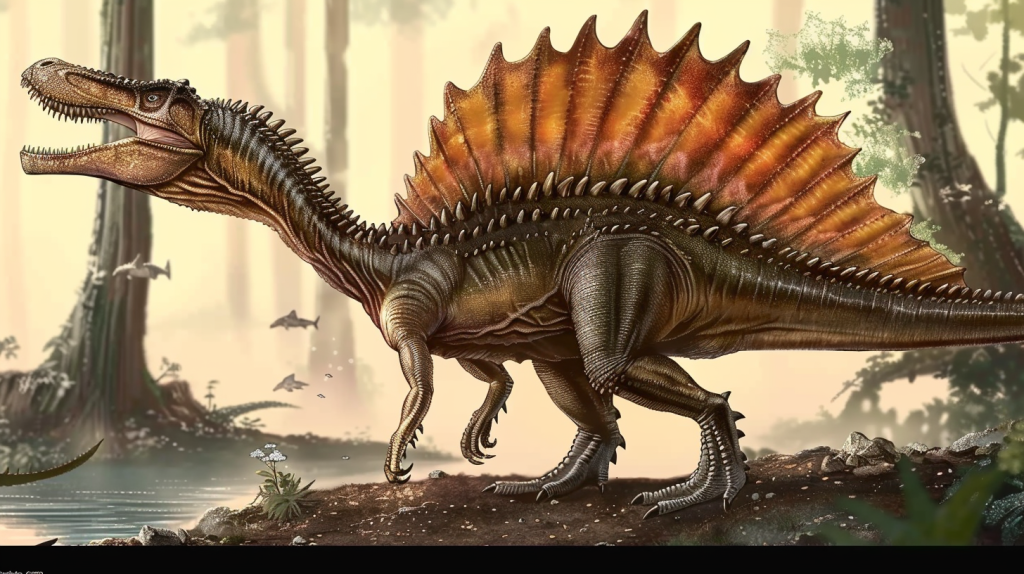
Sarcosuchus shared its world with some massive creatures. It lived during the Early Cretaceous, a time dominated by dinosaurs and giant fish.
Imagine a world where Sarcosuchus had to compete for food with predators like Spinosaurus. These large animals needed lots of food, creating fierce competition.
In this ancient ecosystem, enormous creatures like Sarcosuchus coexisted, each fighting for survival in a perilous world.
Katy Willis is a writer, master herbalist, master gardener, and certified canine nutritionist who has been writing since 2002. She’s finds joy in learning new and interesting things, and finds history, science, and nature endlessly fascinating.
